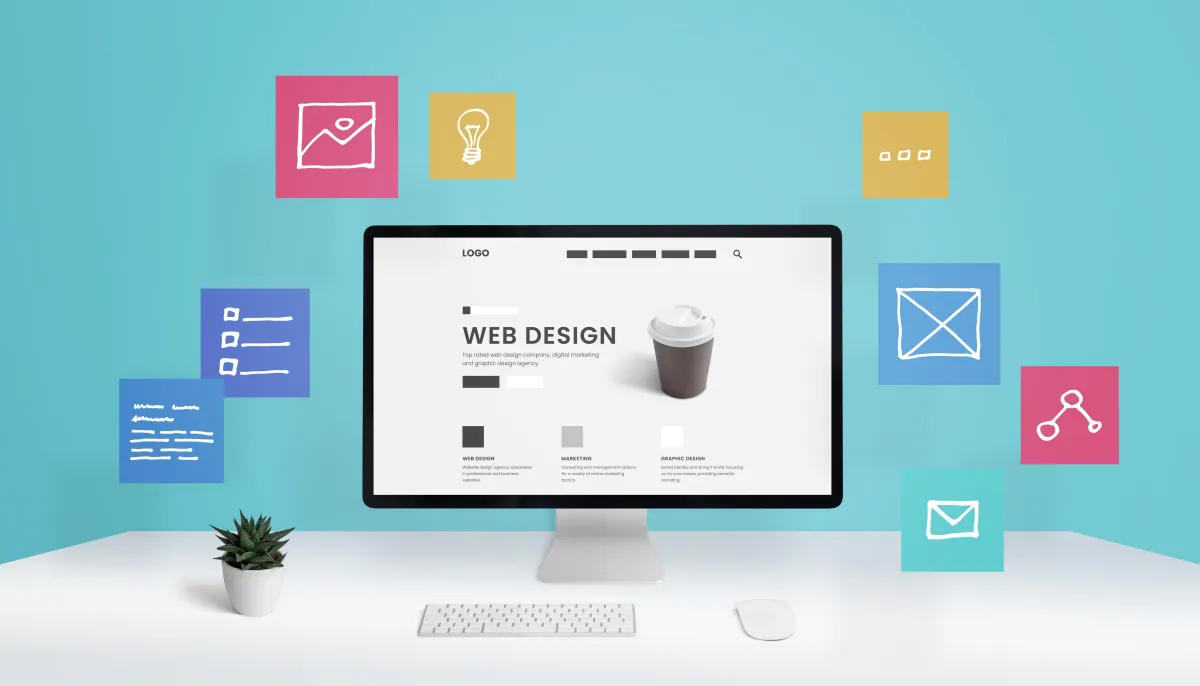Website Design

Website Design Strategy for Local Business Growth
Objective:
To drive growth and achieve marketing success by designing an engaging, user-friendly website that effectively reaches and converts local website visitors through targeted design tactics.
1. Emphasize Local Branding and Relevance
Use Localized Visuals: Incorporate images of recognizable local landmarks, neighborhoods, or community events to create a sense of familiarity. This helps visitors feel connected to the brand and reinforces your local presence. Highlight Local Testimonials and Case Studies: Showcase feedback from local customers on the homepage or key landing pages. Positive local reviews build trust and make potential clients more comfortable reaching out. Add Location-Based Language: Integrate local keywords (such as neighborhood names or nearby areas) throughout the website content to improve relevance and search engine optimization (SEO) for local queries.
2. Create a Seamless User Experience (UX)
Easy Navigation: Use a clear, intuitive menu layout with well-organized sections so visitors can easily find what they’re looking for. Simplified navigation ensures users can quickly access important information without Frustration Fast Load Times: Optimize images, videos, and other elements to ensure fast load times. Slow-loading pages can drive users away, especially on mobile devices Mobile Responsiveness: Ensure the website is fully optimized for mobile users, as many local customers may be browsing on mobile devices. Mobile-friendly design is essential for both user experience and search rankings.
3. Utilize Clear and Compelling Calls-to-Action (CTAs)
Action-Oriented CTAs: Use clear, action-oriented CTAs that align with user intent, such as “Contact Us,” “Book a Service,” or “Get a Quote.” Place these prominently on each page to guide users toward taking the desired actions. Localized CTAs: Make CTAs relevant to local users by using phrases like “Serving [City/Neighborhood]” or “Visit Our [Location Name] Office Today.” This adds a personal touch and encourages locals to engage. Sticky CTAs on Mobile: For mobile users, implement sticky CTAs that remain visible while scrolling, such as a “Call Now” button, making it easy for visitors to take action.
4. Showcase Core Services and Unique Selling Points (USPs)
Highlight Key Services on the Homepage: Feature primary services on the homepage with direct links for easy access. Summarize each service to quickly communicate what your business offers. Create Dedicated Service Pages: For SEO and user experience, design individual pages for each service. Include details on how the service benefits local customers, making it easy for visitors to find exactly what they need. Emphasize USPs for Local Customers: Display unique advantages of choosing your business, such as “Locally Owned and Operated” or “Serving [City] for 20+ Years,” to build credibility and trust.
5. Incorporate Local SEO Best Practices
Optimize Meta Tags and Headings with Local Keywords: Use relevant local keywords in page titles, meta descriptions, and headers to improve visibility on local searches. Add a Google Maps Embed: Include a Google Maps embed on the Contact or About page, making it easy for users to find your physical location and building local SEO relevance. Schema Markup for Local Business: Add local business schema markup to help search engines understand your location and contact information, boosting local search ranking and visibility.
6. Feature Interactive Elements to Drive Engagement
Live Chat or Chatbot: Implement a live chat feature to answer visitors’ questions in real-time. This is particularly useful for local customers who may have location-specific inquiries or are ready to make an appointment. Clickable Phone Number: For mobile users, make the phone number clickable so users can call directly from their devices, enhancing convenience and improving conversion rates. Customer Testimonials Slider: Add a rotating testimonial or review slider featuring local customers. These reviews offer social proof, helping build trust and encouraging other locals to engage.
7. Optimize Landing Pages for Local Campaigns
Campaign-Specific Landing Pages: Design dedicated landing pages for specific campaigns (e.g., “Fall Specials in [City]”). These pages should match the ad content, provide relevant information, and include a strong CTA to maximize conversions. Hyper-Local Offers: If running any time-sensitive or location-based promotions, create landing pages that emphasize these offers with local language and urgency, such as “Limited Offer for [Neighborhood].”
8. Tracking and Analytics for Continuous Improvement
Set Up Google Analytics: Use Google Analytics to track visitor behavior, bounce rates, and popular pages. This data helps you understand which pages are engaging users and which may need adjustments. Monitor Conversion Paths: Set up conversion goals in Google Analytics to track how visitors are navigating the site, what actions they’re taking, and how well they convert. Optimize pages based on this data to improve the overall user journey. Regular Testing and Updates: Conduct A/B testing on CTAs, images, and layouts to see what performs best. Periodically update the site based on analytics data to ensure it remains effective and user-friendly.
Conclusion
This website design strategy prioritizes local relevance, user-friendly navigation, and strong calls-to-action to create a seamless and engaging experience for local website visitors. By optimizing for both search engines and user engagement, your business can achieve sustained growth and marketing success, building a solid foundation for local customer acquisition and long-term loyalty.
LET’S GET STARTED
Ready To Make a Real Change? Let’s Build this Thing Together!






Facebook
Instagram
X
LinkedIn
Youtube
TikTok